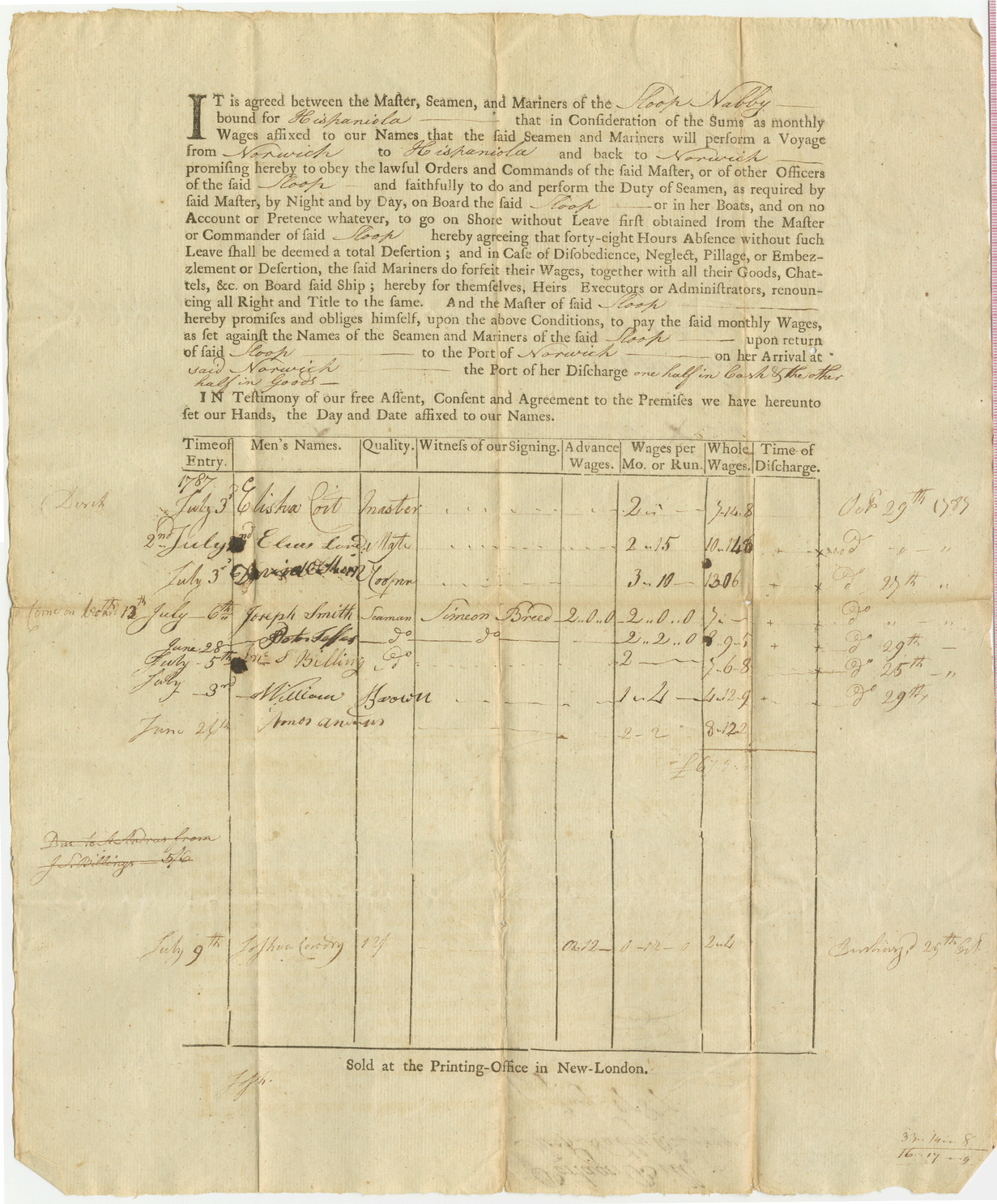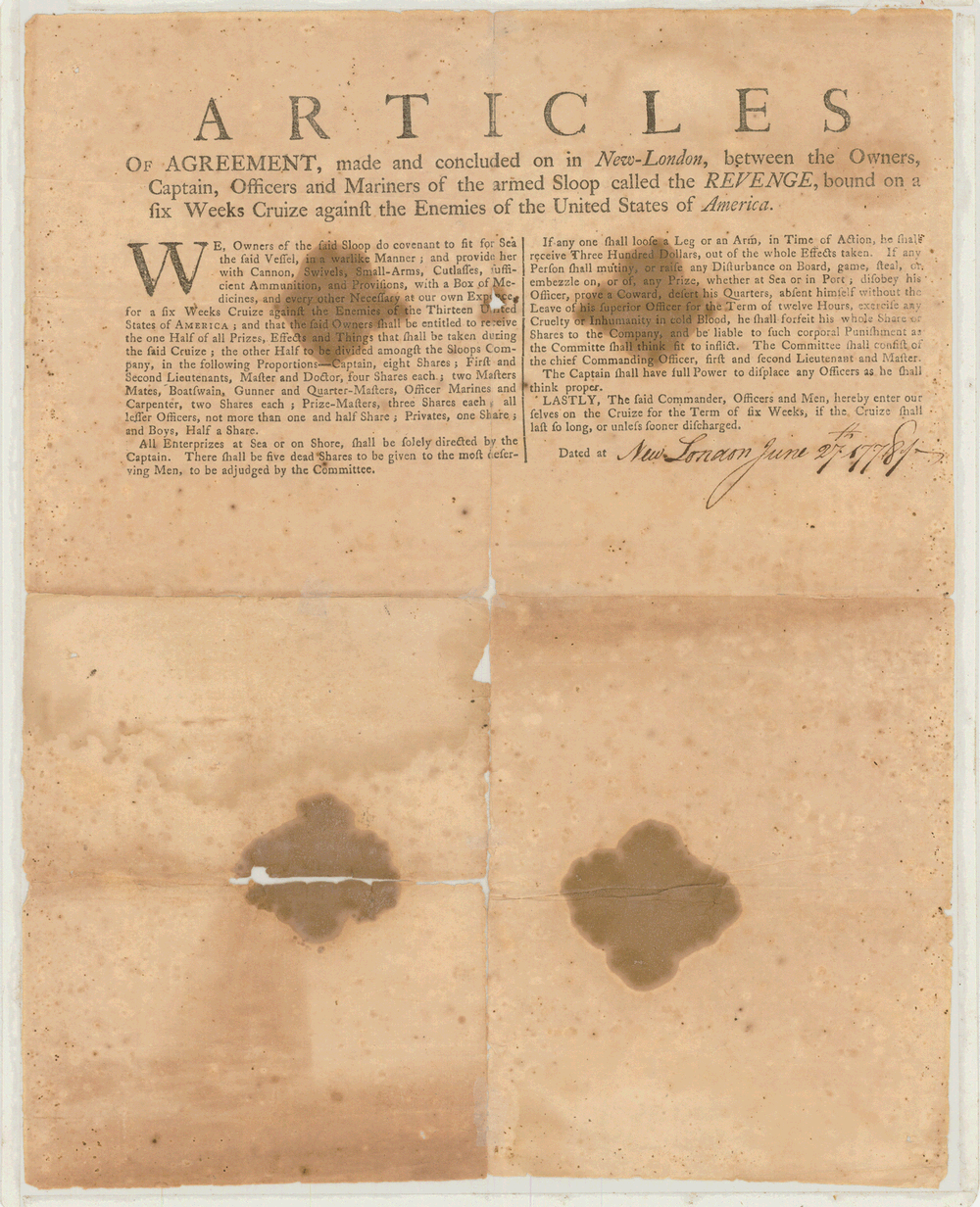Often a printed document, varying in size and format. Early examples averaged about 16″ x 20″ – however, by the 1860s, 23″ x 18″ was a common size. On the front of the document were the conditions agreed to between a vessel’s managers and the crew. Below this was a column for crew members’ signatures, in addition to columns for such data as station, birth place, age, height, wages, hospital money, time of discharge, etc. The number and designations of these columns varied from one document to another. “United States Of America” is often printed prominently on the frontside, and engraved ships, eagles, etc., are frequently found on both sides of the Articles. After 1790 the backside quite often presented printed abstracts of all Federal laws currently in force relative to seamen’s protection and the conduct of officers and crew while at sea. There was also a place set aside for the crew to sign for receipt of their wages at the end of the voyage. Customs or consular stamps and seals were also present.
By a Congressional Act in 1790, Articles of Agreement was a document required of every vessel sailing for a foreign port and for any vessel, of 50 tons or more, bound to any domestic port, except to one in an adjoining state. Fishermen engaged in the fisheries also had to sign shipping articles, and were entitled to the same privileges and subject to the same regulations as sailors. The document contained the signatures of the master and every member of the crew (or his mark), and was considered to be a separate contract for each person signing. It provided legal evidence not only as to the nature and length of the voyage, but as to the duties to be performed and wages due. A copy of the Articles, certified by the collector, had to be taken aboard ship by the master, and was to be produced, when required, before any consul or commercial agent to whom a complaint was made. Since a new Articles of Agreement was required for each voyage (and they were not recalled by the Customs Service) these documents are commonly found in maritime collections. They rank among the more valuable and comprehensive research sources, providing important information for a great number of marine subjects.

Articles of Agreement were being used even before the Act of 1790. This example, June -July 1787, was essentially a private contract between the vessel’s owners and each member of the crew who signed the Articles. There are no signatures of port officials, and obviously no references to compliance with existing regulatory laws. The document is similar in size and style, however, to the more standardized forms that existed during the early 1800s.
The reverse side of the Articles often contained sections of Federal legislation relative to seamen’s protection, and the conduct of American vessels towards their crew members. The example illustrated here is typical of those in use during the mid-nineteenth century.

This Articles of Agreement was part of the documentation required by the owners of the Privateer Revenge, for a cruise against the British. The printed format is unique, since these documents were usually completely handwritten. Note that it was printed specifically for the sloop Revenge, and indicated that the vessel was to sail, “…against the Enemies of the Thirteen United States of America…, ” for a period not to exceed six weeks. Although dated at New London, Connecticut, on 27June 1778, the Articles were evidently never executed, since no signatures of crew members or officers, etc., appear in the space provided.
